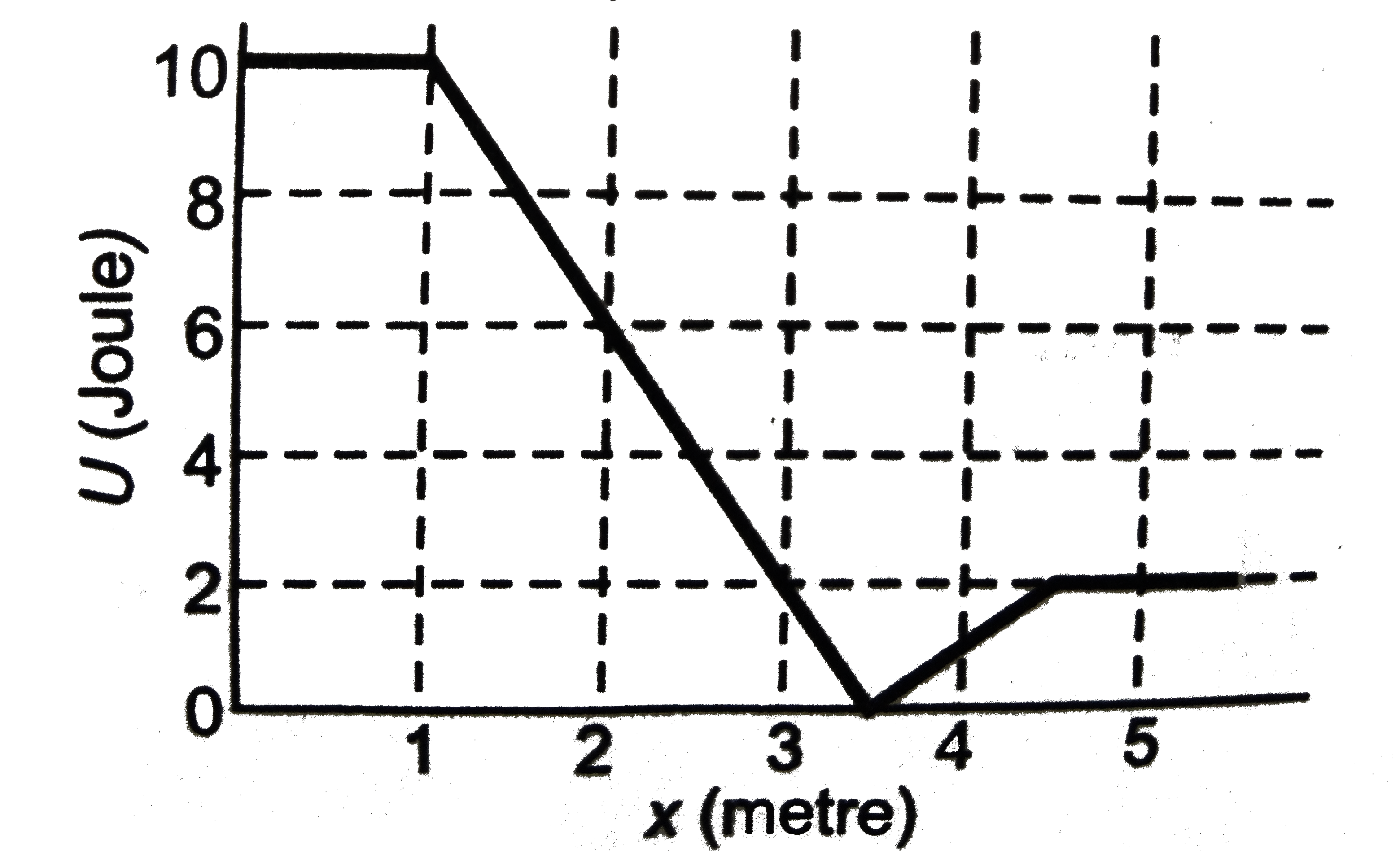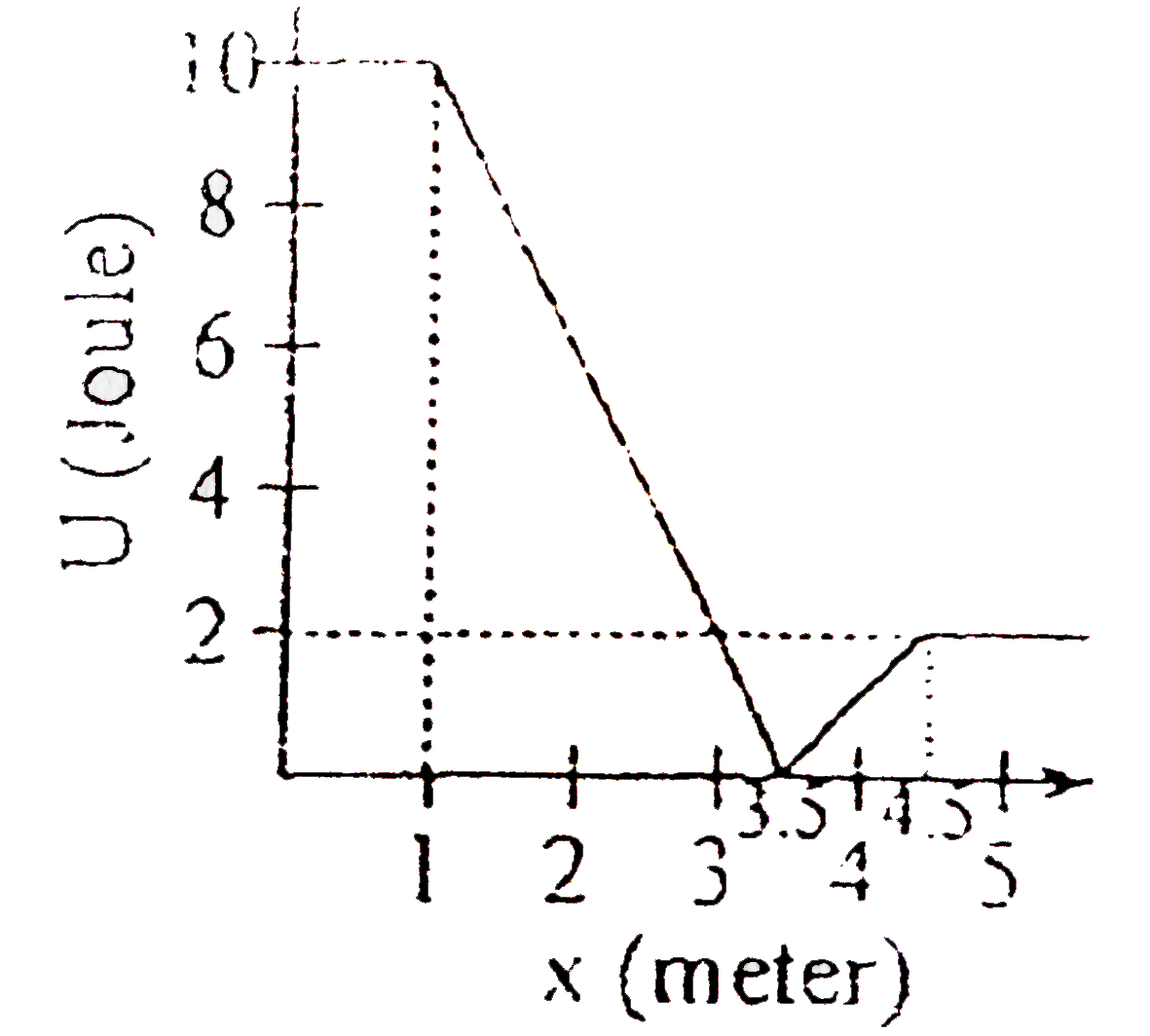A body with mass 1kg moves in one direction in the presence of a force which is described by the potential energy graph. If the body is releasd from rest at x=2m, than its speed when it crosses x=5m, is (Neglect dissipative forces).

zero
1ms−1
2√2ms−1
3ms−1
The correct Answer is:C
Let at x=2m,U=U2
10−U22−1=10−03.5−1⇒U2=6J
(KE+PE)x=2m=(KE+PE)x=5m
⇒0+6=12(1)v2+2⇒v=2√2m/s
Topper's Solved these Questions
- WORK, ENERGY, POWER AND COLLISIONBOOK - A2ZCHAPTER - WORK, ENERGY, POWER AND COLLISIONEXERCISE - Mechanical Power
25 Videos
- WORK, ENERGY, POWER AND COLLISIONBOOK - A2ZCHAPTER - WORK, ENERGY, POWER AND COLLISIONEXERCISE - Circular Motion In Vertical Plane
21 Videos
- WORK, ENERGY, POWER AND COLLISIONBOOK - A2ZCHAPTER - WORK, ENERGY, POWER AND COLLISIONEXERCISE - Potential Energy, Conservative And Non-Conservative Forces
28 Videos
- WAVES AND ACOUSTICSBOOK - A2ZCHAPTER - WAVES AND ACOUSTICSEXERCISE - Chapter Test
30 Videos
Similar Questions
Knowledge Check
A body with mass 2kg moves in one direction in the presence of a force which is described by the potential energy graph. If the body is released from rest at x=2m, then its speed when it crosses x=5m is :−
 AzeroB1ms−1C2ms−1D3ms−1
AzeroB1ms−1C2ms−1D3ms−1A body of mass 2kg is moving under the influence of a central force whose potential energy is given by U=2r3J. If the body is moving in a circular orbit of 5m, its energy will be
A625JB250JC500JD125JA particle of mass m moves on positive x-axis under the influence of force acting towards the origin given by −kx2ˆi. If the particle starts from rest at x=a, the speed it will attain when it crosses the origin is
A(√kma)B(√2kma)C(√ma2k)DNone of these
An object of mass 8 kg starts to move from rest under the action of a variable force F=3xN where x is the distance (in m) covered by the object. If initially, the position of the object is x = 2 m, then find its speed (in m s−1) when it crosses x = 10 m.
View SolutionA body of mass 2kg is projected vertically upwards with a speed of 3m/s. The maximum gravitational potential energy of the body is :
View SolutionA body of mass 1kg is moving along a straight line with a velocity of 1m/s. The external force acting in the body is
View SolutionA body of mass 1kg is moving with a uniform speed of 1m/s in a circular path of radius 1m. The external force acting on the body is
View SolutionA body of mass m kg starts from rest and travels a distance of s m in t seconds. The force acting on it is
View Solution
